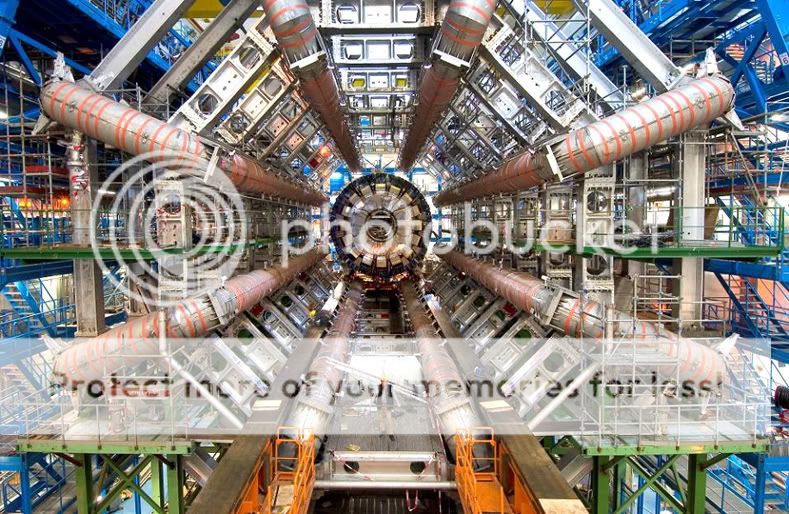The accelerator of the future: the Large Hadron Collider
Construction of the CMS detector for LHC at CERNMost of the activities at CERN are currently directed towards building a new collider, the Large Hadron Collider (LHC) and the experiments for it. The LHC represents a large-scale, worldwide scientific cooperation project. Physics experiments are expected to start May 2008, delayed due to an inner triplet magnet assembly failing a pressure test in March 2007[4][5].
The LHC tunnel is located 100 metres underground, in the region between the Geneva airport and the nearby Jura mountains. It uses the 27 km circumference circular tunnel previously occupied by LEP which was closed down in November 2000. CERN's existing PS/SPS accelerator complexes will be used to pre-accelerate protons which will then be injected into the LHC.
Six experiments (CMS, ATLAS, LHCb, TOTEM, LHC-forward and ALICE) are currently being built, and will be running on the collider; each of them will study particle collisions under a different point of view, and with different technologies. Construction for these experiments needed an extraordinary engineering effort. Just as an example, to lower the pieces for the CMS experiment into the underground cavern which will host it, a special crane will have to be rented from Belgium, which will be able to lift the almost 2000 tons for each piece. The first of the approximately 5,000 magnets necessary for construction was lowered down a special shaft at 13:00 GMT on 7 March 2005.
This accelerator will generate vast quantities of computer data, which CERN will stream to laboratories around the world for distributed processing (the GRID technology). In April 2005, a trial successfully streamed 600 MB per second to seven different sites across the world. If all the data generated by the LHC is to be analysed, then scientists must achieve 1,800 MB per second before 2008.



